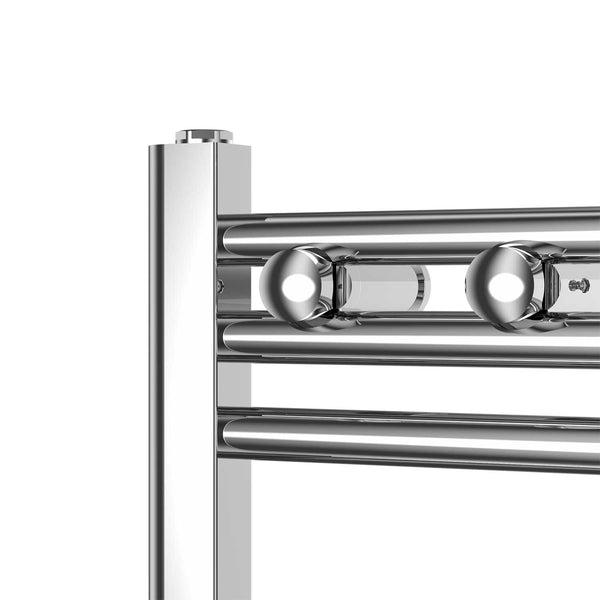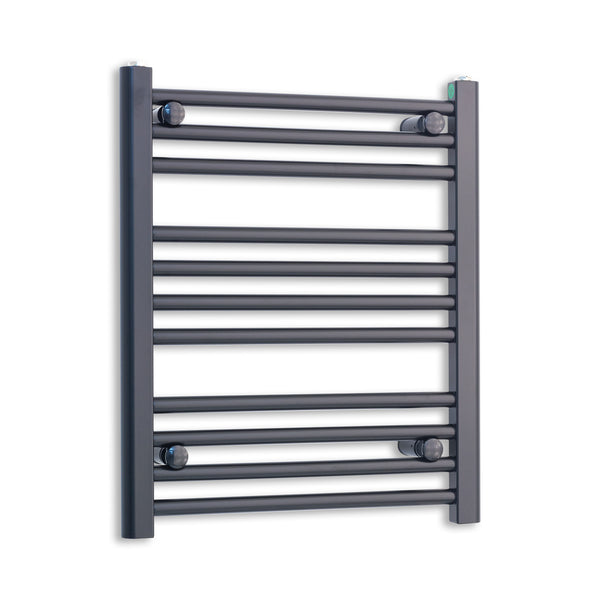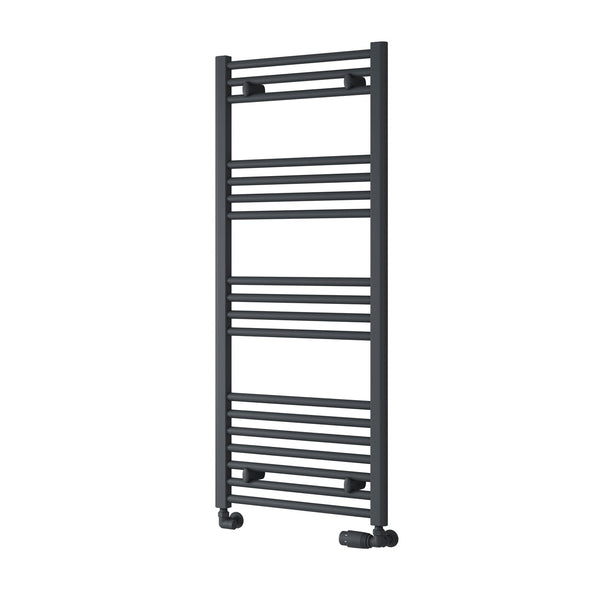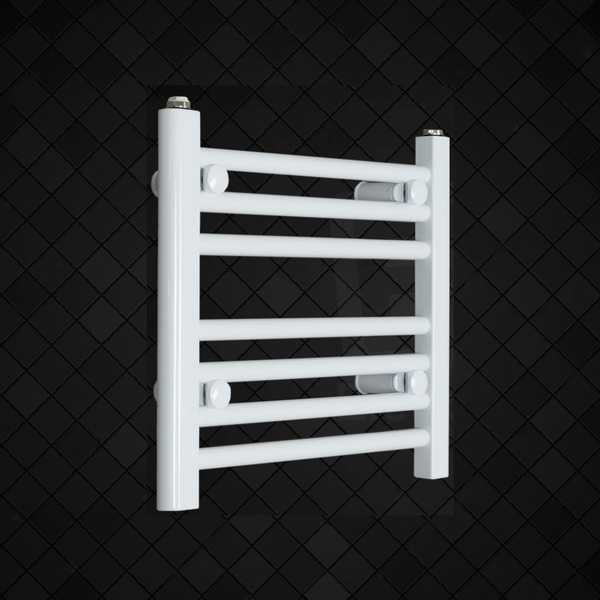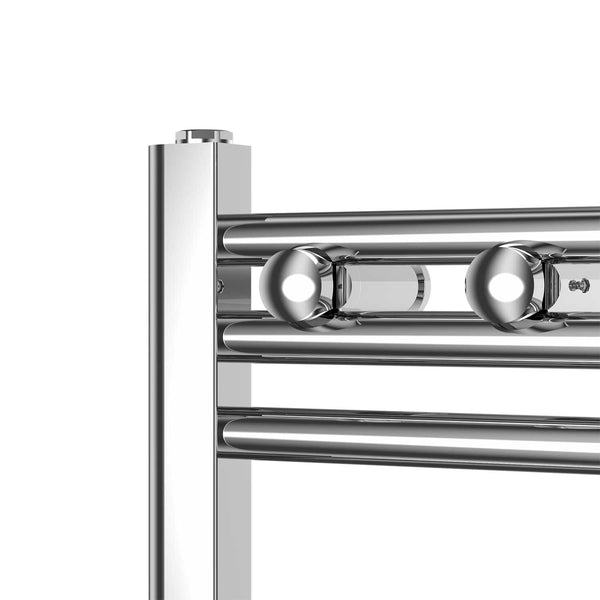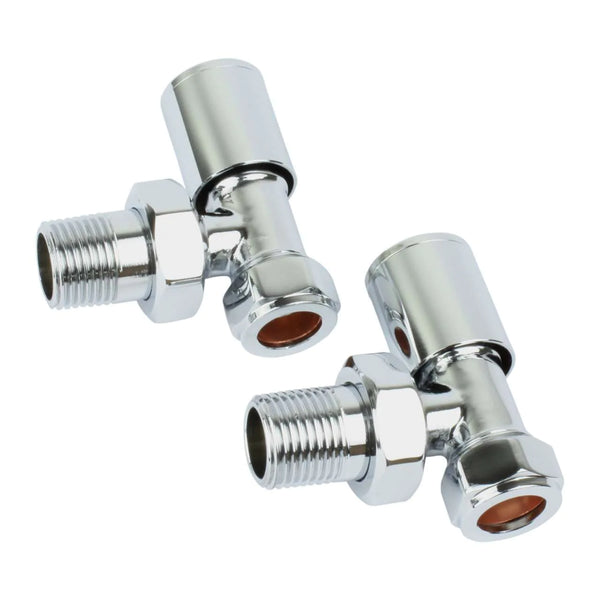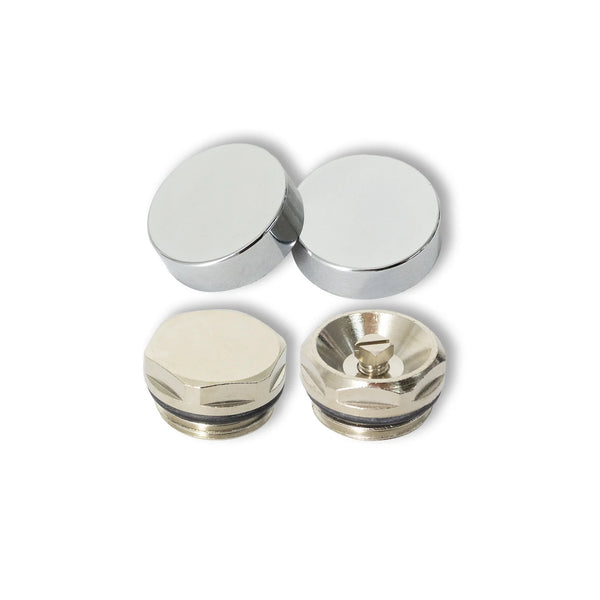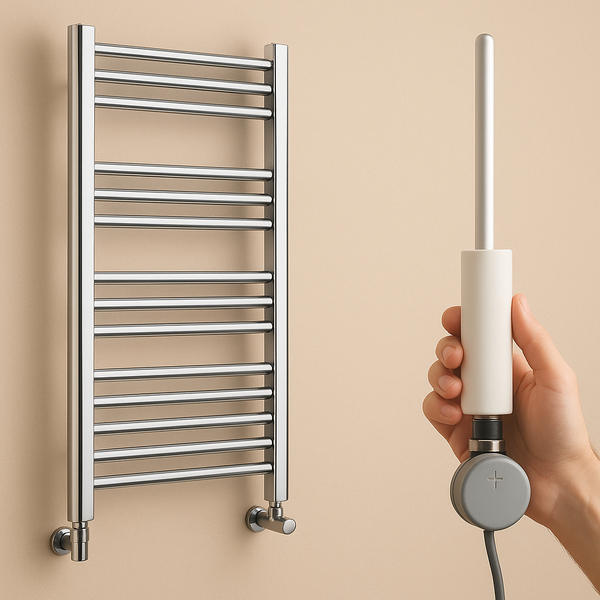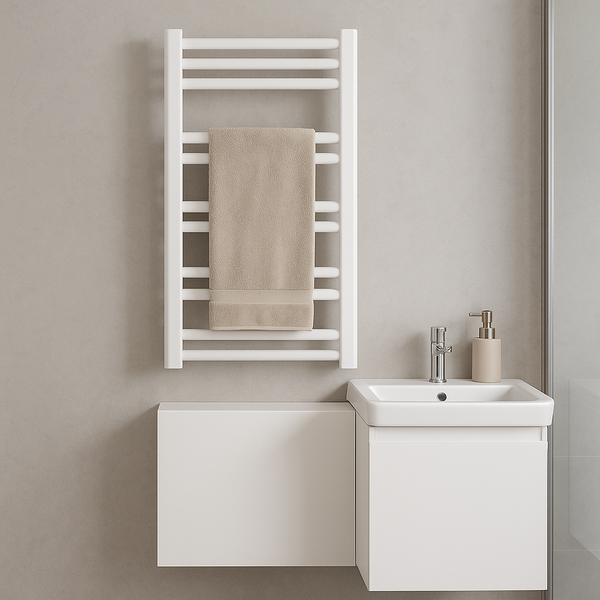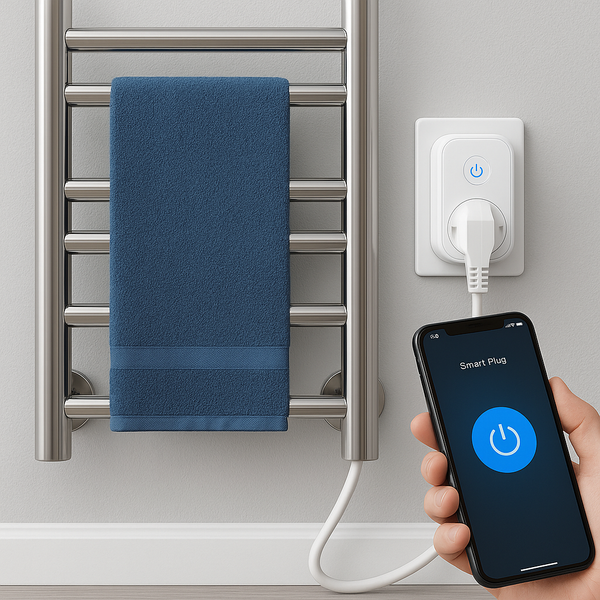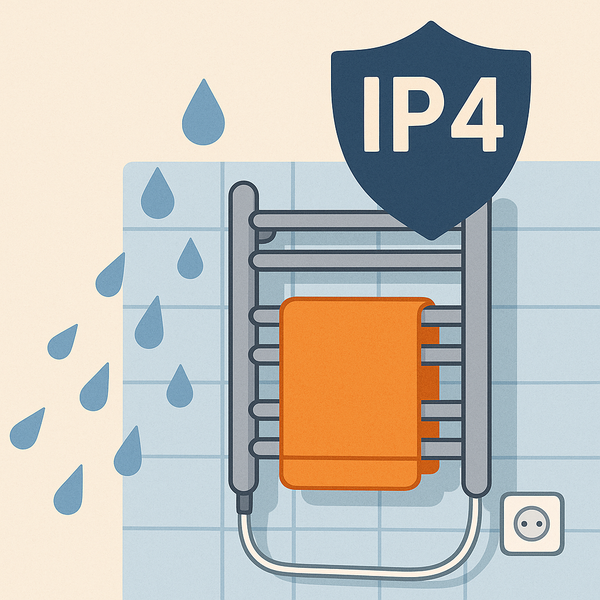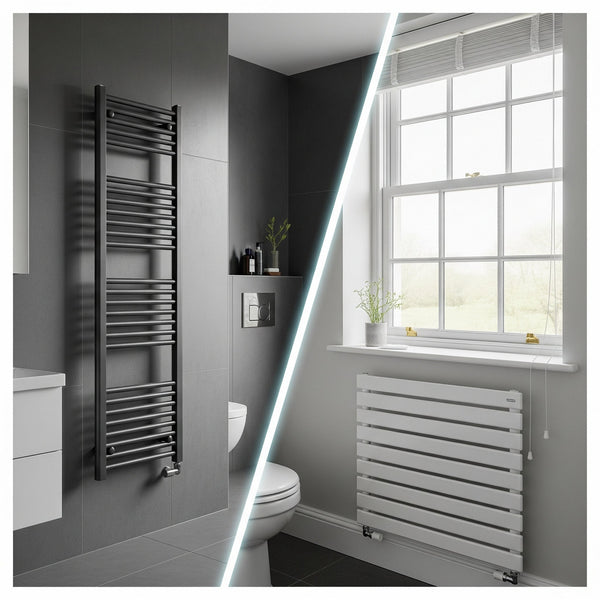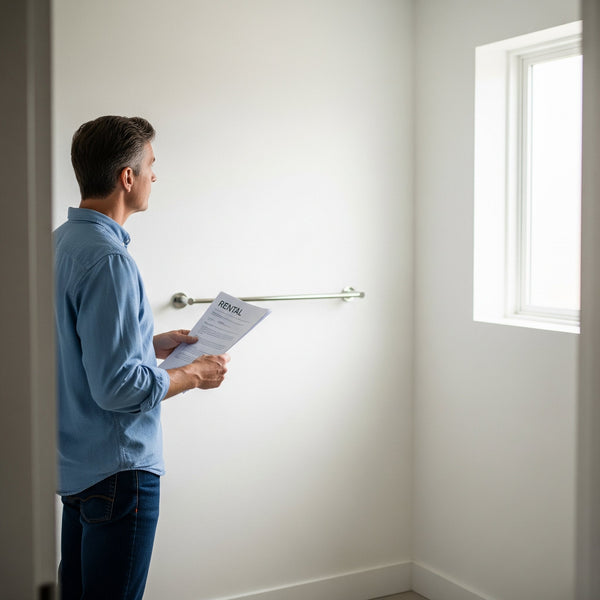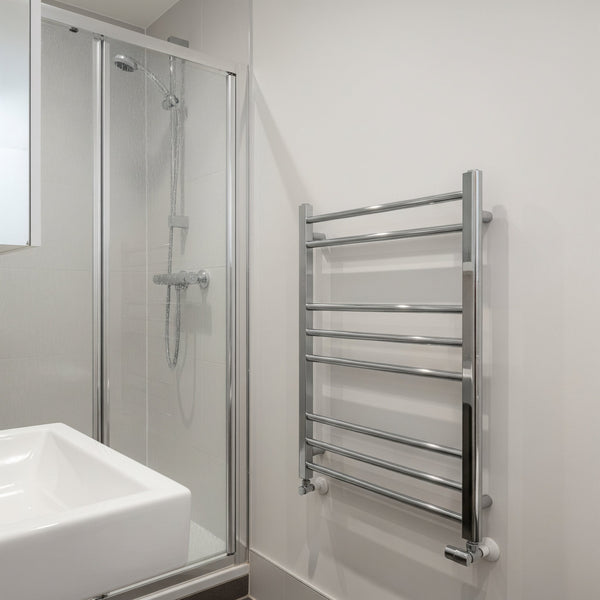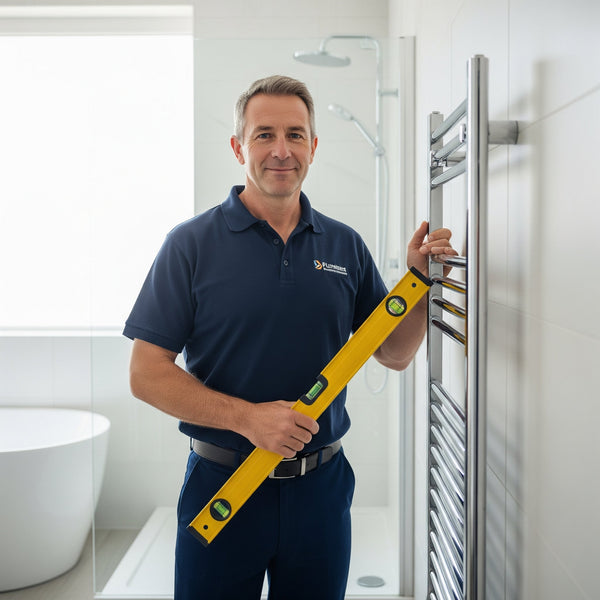A Landlord's Guide: Choosing Durable, Low-Maintenance Towel Rails for Rental Properties
In the competitive UK rental market of 2025, attracting and retaining high-quality tenants goes beyond location and square footage. The fixtures and fittings within a property play a crucial role in a prospective tenant's decision making process. A modern, functional, and well maintained bathroom is a significant selling point, and a heated towel rail is a feature that tenants have come to expect as standard. It signals a certain level of quality and care, elevating a property from "acceptable" to "desirable".

However, for a landlord, every component installed in a property is a long-term financial calculation. The goal is to maximise appeal and rental yield while minimising maintenance calls, repairs, and premature replacements. A towel rail is no exception. Choosing the wrong one a cheap, flimsy model with a poor finish or overly complex controls can quickly turn a desirable feature into a recurring headache. This expert guide from Companyblue is written specifically for landlords and property investors. We will take a deep dive into the key considerations, moving beyond the basics to help you select towel rails that are not just stylish, but are robust, safe, compliant, and ultimately, a profitable long-term investment for your property portfolio.
Key Consideration #1: Durability is Your Primary Defence
A rental property is, by its nature, subject to more wear and tear than an owner-occupied home. You cannot guarantee a tenant will meticulously wipe down surfaces or ventilate a room correctly. Therefore, the inherent durability of the product is your first line of defence against premature failure and replacement costs. When assessing durability, focus on two core aspects: the base material and the surface finish.
Base Material: Mild Steel vs. Stainless Steel
The vast majority of heated towel rails on the market are made from mild steel. This is a perfectly good material that is strong, easy to shape, and cost-effective, allowing for a huge range of affordable designs. For a high-quality mild steel rail, the key to its longevity is the quality of the protective outer layer (the chrome or paint). However, if even a tiny, deep scratch penetrates this layer, the steel underneath is susceptible to corrosion, especially in the permanently humid environment of a bathroom. For the ultimate "fit and forget" durability, a stainless steel towel rail is the superior choice for a rental property. Stainless steel has chromium mixed into its composition, which makes it inherently resistant to rust and corrosion through and through. It doesn't rely on a perfect outer coating for its protection. While the initial purchase price is higher, its resilience against internal corrosion from the heating system's water and external corrosion from bathroom moisture makes it an excellent investment. A stainless steel rail can comfortably outlast several mild steel equivalents, making its total cost of ownership significantly lower over the lifespan of your investment.
Surface Finish: More Than Just a Colour
The finish is the part of the rail that faces the daily reality of damp towels and steamy air. A poor finish will quickly tarnish, flake, or rust, making the entire bathroom look tired and poorly maintained.
- Chrome Plating: A thick, high quality chrome plating provides a hard-wearing, durable, and easy to clean surface. Look for suppliers who offer a long guarantee on their chrome finish, as this is a good indicator of the quality of the plating process.
- Powder Coating (Anthracite, White, Black etc.): This is a modern, tough finish that is effectively a type of plastic "paint" baked onto the metal surface. A well-applied powder coat is resistant to chipping, fading, and scratching from general use. It's a very robust choice and can often hide water spots and fingerprints better than polished chrome, reducing the cleaning burden for tenants.
Avoid very cheap, unbranded rails where the finish is often incredibly thin and prone to failing within a year or two, necessitating a full replacement.
Key Consideration #2: Simplicity Breeds Low Maintenance
Every landlord knows that complexity can be a curse. The more complicated a device, the more opportunities there are for user error, misunderstanding, and service calls. When it comes to towel rails, simplicity is key to a low maintenance tenancy.
- Central Heating Models: This is the simplest and most robust option. Connected directly to the property's main heating system and controlled by simple manual valves, there are no electronics for a tenant to break, mis-program, or misunderstand. Its operation is tied to the main thermostat, which they will already be familiar with. This is the baseline for a tenant-proof installation.
- Electric Models & Controls: If you want to offer heating in the summer months (a strong selling point), you must consider the controls. While a high end Wi-Fi-enabled smart thermostat offers incredible efficiency for a homeowner, it can be a nightmare in a rental. Tenants change, Wi-Fi passwords change, and the need to download an app and learn a new system can be a barrier. A far better solution for a rental is a robust electric rail with a built-in, hard wired programmable timer. Choose a model with an intuitive, simple interface. This provides the energy-saving benefits of scheduling without the complexities of Wi-Fi pairing and app management.
- Dual Fuel - The Ultimate Amenity with a Caveat: A dual fuel rail offers the best of both worlds but introduces one key risk: a tenant switching on the electric element while the central heating valves are also open. While this won't cause an immediate catastrophe, it's highly inefficient and can put stress on the heating element. If you install a dual fuel model, providing a simple, laminated instruction card next to the rail explaining the "one or the other" principle is a five-minute job that can save countless future problems. Shop all Dual Fuel Towel Rails
Key Consideration #3: Safety and Legal Compliance Are Your Duty
As a landlord, you are legally responsible for ensuring your property is safe for your tenants. This is non-negotiable, and the bathroom is an area of particularly high scrutiny due to the proximity of water and electricity.
Professional Installation: It is your legal duty to ensure any installation is safe. For any 'wet' plumbing work, a qualified and insured plumber is essential to prevent leaks. For any electrical work including the installation of a fully electric or dual fuel towel rail you are legally required to use a qualified, registered electrician. They will ensure the appliance is correctly installed in the appropriate electrical zone, is protected by an RCD (Residual Current Device), and will issue an Electrical Installation Certificate (EIC) or a Minor Electrical Installation Works Certificate (MEIWC). This certificate is not just a piece of paper; it is your legal proof that you have met your duty of care. Keep this document in a safe place for your property records.
Lot 20 and EPC Ratings: When installing a purely electric model, you must choose a Lot 20 Ecodesign compliant model. This is a legal requirement for heaters sold in the UK since 2018. These models include essential energy-saving features like programmable timers and accurate thermostats. Installing a compliant, efficient heater can also positively impact your property's Energy Performance Certificate (EPC) rating, which is becoming increasingly important in the UK rental sector.
Key Consideration #4: Calculating True Long-Term Value
It is tempting to look at two towel rails and simply choose the cheaper one. This is one of the biggest mistakes a landlord can make. You should instead consider the Total Cost of Ownership (TCO).
Think of it this way:
- Product A: £50 cheap, mild steel rail. The finish fails after 2 years. You have to pay a plumber £200 to drain the system and replace it. Total cost after 2 years: £250.
- Product B: £120 high-quality, stainless steel rail from a reputable brand. It looks just as good after 10 years. Total cost after 10 years: £120.
The initial saving is a false economy. Investing more upfront in a durable, well-made product from a supplier who offers a long warranty (5-10 years is a great sign) will almost always result in a lower TCO. Furthermore, high-quality fixtures contribute to a higher standard of property, which can attract more reliable tenants, reduce void periods, and potentially justify a higher rental price, providing a far better return on your initial investment.
FAQ: For Landlords Installing Towel Rails
Here are our answers to the most common questions from property investors.
Which type of towel rail is the most "tenant-proof"?
For ultimate simplicity and robustness, a high-quality stainless steel central heating towel rail with simple manual valves is the most tenant-proof option. There are no electronics to fail or for tenants to misuse. It simply works when the heating is on.
Are dual fuel towel rails a good idea for a rental property?
They can be a great feature, but you must balance the benefit against the added complexity. They are very attractive to tenants as they allow for dry towels in summer. The risk is that a tenant might accidentally leave both the central heating valve and the electric element on at the same time. If you do install one, providing clear, simple instructions for its use is essential.
Do I have to provide instructions for the heating controls?
Yes, it is highly recommended. Leaving the user manual for any programmable timer or thermostat, along with a simple, laminated one-page guide you've created yourself, can prevent a huge number of tenant call-outs and ensures the system is used efficiently.
Should I set the heating schedule myself on a programmable timer?
It's a good idea to pre-program a basic, energy-efficient schedule (e.g., a couple of hours in the morning and evening) before the tenancy begins. This provides a helpful starting point for the tenant, who can then adjust it to their own lifestyle if they wish.
What kind of warranty should I look for?
Look for a long manufacturer's warranty on the towel rail itself (e.g., 5-10 years), as this is a strong indicator of the quality and durability of the body and finish. Electrical components like heating elements will typically have a shorter, separate warranty (e.g., 1-2 years).
